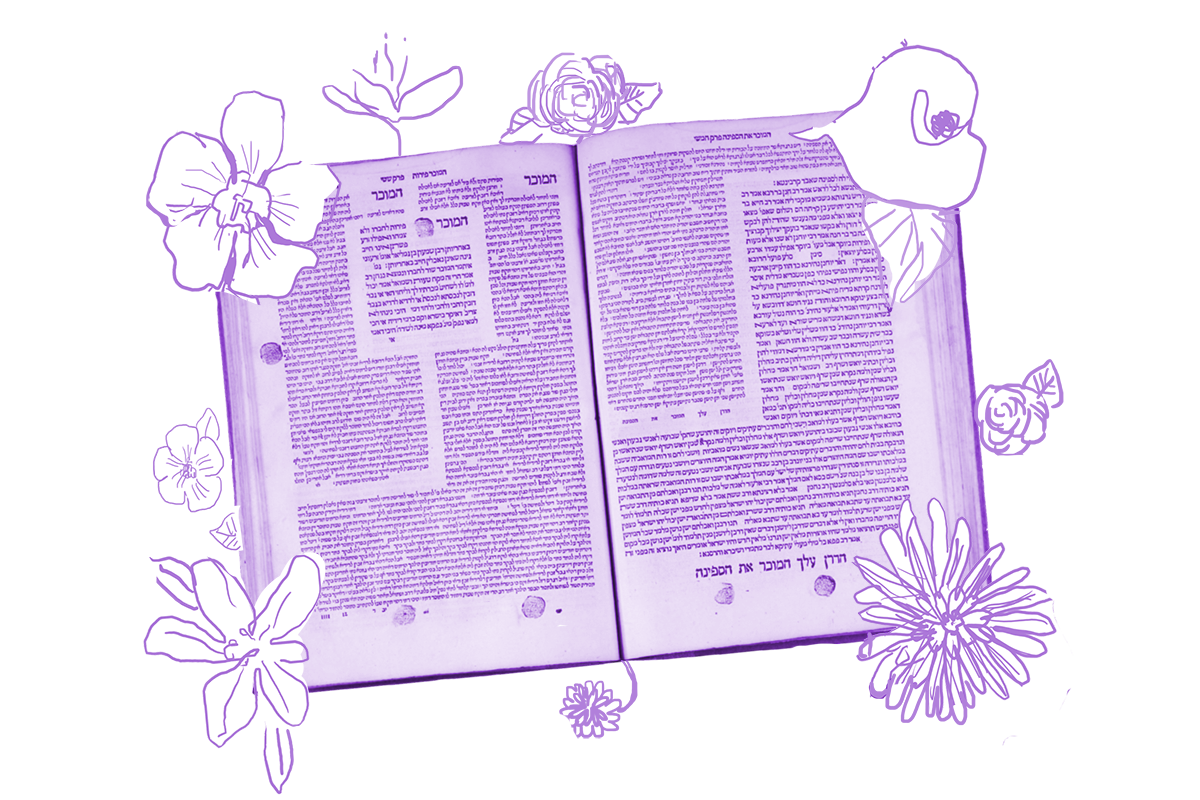Think rabbinic texts are difficult? Struggling with a language barrier? Turns out, the rabbis often did too.
Today’s page concludes the first chapter of tractate Shabbat and opens the second with a long mishnah that lists materials that may not be used as wicks or fuel in Sabbath lamps. In fact, the next several mishnahs will continue to list the many prohibited materials for Shabbat candles.
This mishnah and the several that follow it are traditionally recited by Ashkenazi Jews every Friday night between Kabbalat Shabbat and the evening service. (Sephardic Jews also say it, but they place it elsewhere in the Friday evening service.) There are a number of reasons for this practice, but one is the desire to repudiate other ancient Jewish sects that did not accept rabbinic law and abided by the literal meaning of the verse in Exodus 35:3 that prohibited the kindling of a fire in dwellings on Shabbat. Those sects understood the verse to require that they sit in the dark and cold on Shabbat with no light or heat. But the rabbis understood the verse differently — the prohibition is on kindling a fire, not having one burning. And to drive the point home, they instituted the practice of reviewing the laws around such fires every Friday night.
Here’s the list of materials from the mishnah on today’s daf:
With your help, My Jewish Learning can provide endless opportunities for learning, connection and discovery.
With what may one light the Shabbat lamp, and with what may one not light it?
With regard to types of prohibited wicks, one may light neither with cedar bast [lekhesh], nor with uncombed flax [hosen], nor with raw silk [kalakh], nor with willow bast [petilat ha’idan], nor with desert weed [petilat hamidbar], nor with green moss that is on the surface of the water.
With regard to types of prohibited oils, one may light neither with pitch [zefet], nor with wax [sha’ava], nor with castor oil [shemen kik], nor with burnt oil [shemen sereifa], nor with fat from a sheep’s tail [alya], nor with tallow [ḥelev].
Nahum the Mede says: One may light with boiled tallow.
The rabbis say: Both tallow that was boiled and tallow that was not boiled, one may not light with them.
It turns out that there are lots of materials one may not use to create a Shabbat lamp. But as quickly becomes apparent in the Gemara, the rabbis do not understand many of these terms which, several centuries after they were penned in the Mishnah in the land of Israel, are somewhat incomprehensible in Babylonia.
For example, consider what the Gemara says about lekhesh, which has been translated here as “cedar bast” (whatever that is!):
Lekhesh is the branch of the cedar tree.
Ok, that’s clearer — a tree branch. But wait a minute, can one make a wick out of a branch? Indeed, the Gemara has the same question. Fortunately, clarification is forthcoming:
The mishna is referring to the woolly substance that is beneath its bark.
So apparently there is a softer substance beneath the bark of a cedar tree that can be fashioned into a suitable wick for a lamp — but may not be used for a Sabbath lamp.
And so it goes. Sometimes the rabbis of the Talmud, like us, are simply struggling to understand, on the most basic level, what their ancestors and religious heroes are talking about.
Read all of Shabbat 20 on Sefaria.
This piece originally appeared in a My Jewish Learning Daf Yomi email newsletter sent on March 26, 2020. If you are interested in receiving the newsletter, sign up here.



